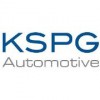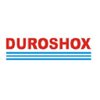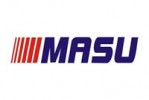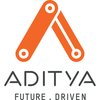Filter interviews by
Maxxis Rubber Interview Questions and Answers
22 Interview questions
ID can be measured by observing the bearing of an object in relation to a known point.
Use a compass to determine the bearing of the object from the known point.
Measure the angle between the direction of the object and the known point.
Calculate the ID using trigonometry based on the angle and the distance between the object and the known point.
TPM stands for Total Productive Maintenance, a proactive approach to maintenance that aims to maximize equipment effectiveness.
TPM involves empowering operators to take ownership of equipment maintenance
Focuses on preventing breakdowns and improving overall equipment efficiency
Incorporates principles such as autonomous maintenance, planned maintenance, and continuous improvement
Example: Implementing daily equipmen...
TPM target stands for Total Productive Maintenance target, which is a goal set to maximize the efficiency and effectiveness of production equipment.
TPM target is a goal set to minimize equipment downtime and maximize productivity.
It involves proactive maintenance practices to prevent breakdowns and improve overall equipment effectiveness.
Examples of TPM targets include reducing unplanned downtime by 20% or increas...
7QC stands for Seven Quality Control Tools, which are a set of techniques used for quality improvement in production processes.
The 7QC include tools such as Pareto charts, cause-and-effect diagrams, scatter diagrams, control charts, histograms, check sheets, and flowcharts.
These tools help identify and solve quality-related issues in production processes.
For example, a Pareto chart can help prioritize the most sig...
Handling worsted conditions in a manufacturing job requires staying calm, problem-solving skills, and effective communication.
Stay calm and composed under pressure to make rational decisions
Utilize problem-solving skills to quickly address and resolve issues
Communicate effectively with team members and supervisors to keep them informed of the situation
Prioritize tasks based on urgency and importance to manage wors...
Create a detailed 2D drawing of a turning part with multiple views in 15 minutes for a mechanical design engineer interview.
Start with the front view to establish the main profile of the turning part.
Include the top view to show the overall dimensions and any features like holes or grooves.
Add a side view to provide depth and any additional features not visible in the front view.
Use appropriate dimensioning techni...
Maxxis is a tire company that produces high-quality tires for various vehicles.
Maxxis is a global tire company that was founded in Taiwan in 1967.
They produce tires for bicycles, motorcycles, cars, trucks, and more.
Maxxis is known for their high-quality tires that offer excellent performance and durability.
Their tires have won numerous awards and are used by professional athletes and teams.
Maxxis also sponsors var...
M10 is a designation for a concrete mix with a compressive strength of 10 N/mm².
M10 is a mix of 1:3:6 cement, sand, and aggregate.
It is commonly used for non-structural works such as flooring, plastering, and pathways.
The compressive strength of M10 is 10 N/mm² or 1450 psi.
The 'M' in M10 stands for 'mix' and the number represents the compressive strength.
Higher numbers indicate higher compressive strength, with M2...
Natural rubber is more effective due to its superior elasticity and durability.
Natural rubber has better elasticity and resilience than synthetic rubber.
Natural rubber is more durable and resistant to wear and tear.
Synthetic rubber may have advantages in certain applications, such as oil and chemical resistance.
Examples of natural rubber products include tires, rubber bands, and latex gloves.
Examples of synthetic ...
A system is a set of interconnected components that work together to achieve a common goal.
A system can be physical or abstract
It can be natural or man-made
Examples include the human body, a computer system, and the solar system
Maxxis Rubber Interview Experiences
25 interviews found
I applied via Walk-in and was interviewed in Mar 2023. There were 5 interview rounds.

There was questions related to maths reasoning Gk and little bit questions about company profile.
(1 Question)
- Q1. Because of i gave interview of mechanical design engineer so they gave me a Turning part and said to make a 2d drawing in 15 mints that will contain all the drawing views.
- Ans.
Create a detailed 2D drawing of a turning part with multiple views in 15 minutes for a mechanical design engineer interview.
Start with the front view to establish the main profile of the turning part.
Include the top view to show the overall dimensions and any features like holes or grooves.
Add a side view to provide depth and any additional features not visible in the front view.
Use appropriate dimensioning techniques ...
(1 Question)
- Q1. This was basically an Interview round where they asked following questions - 1. Tell me about yourself 2. How many days you will stay here if you selected 3. Some technical questions related to tolerance, ...
(2 Questions)
- Q1. Good knowledge of command is important in this round
- Q2. I made 2d drawing in AutoCAD. There was a time limit of 15mints. Time and accuracy are more important in this round.
Interview Preparation Tips
If your English is average after that you can select in a MNC like me.
They saw your confidence and willingness to learn.
(2 Questions)
- Q1. Types of bearing
- Ans.
Bearings are mechanical components that allow for smooth rotation or movement between two parts.
Types of bearings include ball bearings, roller bearings, plain bearings, and fluid bearings.
Ball bearings use balls to reduce friction between two surfaces.
Roller bearings use cylindrical rollers to support radial and axial loads.
Plain bearings have a simple design with no rolling elements.
Fluid bearings use a thin layer of...
- Q2. How to measure ID by seeing bearing
- Ans.
ID can be measured by observing the bearing of an object in relation to a known point.
Use a compass to determine the bearing of the object from the known point.
Measure the angle between the direction of the object and the known point.
Calculate the ID using trigonometry based on the angle and the distance between the object and the known point.
Interview Preparation Tips

(3 Questions)
- Q1. What is the 7QC ?
- Ans.
7QC stands for Seven Quality Control Tools, which are a set of techniques used for quality improvement in production processes.
The 7QC include tools such as Pareto charts, cause-and-effect diagrams, scatter diagrams, control charts, histograms, check sheets, and flowcharts.
These tools help identify and solve quality-related issues in production processes.
For example, a Pareto chart can help prioritize the most signific...
- Q2. What is the TPM?
- Ans.
TPM stands for Total Productive Maintenance, a proactive approach to maintenance that aims to maximize equipment effectiveness.
TPM involves empowering operators to take ownership of equipment maintenance
Focuses on preventing breakdowns and improving overall equipment efficiency
Incorporates principles such as autonomous maintenance, planned maintenance, and continuous improvement
Example: Implementing daily equipment che...
- Q3. What is the TPM target?
- Ans.
TPM target stands for Total Productive Maintenance target, which is a goal set to maximize the efficiency and effectiveness of production equipment.
TPM target is a goal set to minimize equipment downtime and maximize productivity.
It involves proactive maintenance practices to prevent breakdowns and improve overall equipment effectiveness.
Examples of TPM targets include reducing unplanned downtime by 20% or increasing e...
(2 Questions)
- Q1. All are common Don’t new
- Q2. All erratating question
(3 Questions)
- Q1. All about maintenance
- Q2. All about maintenance and don’t need to in the compny
- Q3. It’s all are common for maintenance
Interview Preparation Tips
I applied via Approached by Company and was interviewed before Sep 2022. There were 2 interview rounds.

(3 Questions)
- Q1. Pneumatic and hydraulic
- Q2. MTTR, MTBF, TPM.
- Q3. Preventive maintenance, shutdown plan
Interview Preparation Tips
- Own experience
- Basics of maintenance
- MTTR
- MTBF
- Preventive Maintenance
I applied via Naukri.com and was interviewed before Jun 2022. There were 3 interview rounds.

They have to conduct the exam for aptitude test where some technical questions in the paper .
(6 Questions)
- Q1. Brief your introduction
- Q2. Do you know the company ?
- Q3. What is our products and how many country we have plants do you know?
- Ans.
The company produces automotive components and has plants in multiple countries.
The company specializes in manufacturing automotive components such as engines, transmissions, and chassis.
They have plants in countries like the United States, Mexico, Germany, and China.
The company's products are used in various vehicles including cars, trucks, and motorcycles.
- Q4. Company established and there progress in basic introduction.
- Q5. Tell about your previous organisation role and responsibilities.
- Q6. How can you handle the worsted condition during the job in manufacturing company.
- Ans.
Handling worsted conditions in a manufacturing job requires staying calm, problem-solving skills, and effective communication.
Stay calm and composed under pressure to make rational decisions
Utilize problem-solving skills to quickly address and resolve issues
Communicate effectively with team members and supervisors to keep them informed of the situation
Prioritize tasks based on urgency and importance to manage worsted c...
Interview Preparation Tips
- Resume
- Technical Skills
- Soft Skills
- MS Office
I applied via Referral and was interviewed before Aug 2022. There were 4 interview rounds.

General & company history related
(1 Question)
- Q1. Family background and previous experience
(4 Questions)
- Q1. Questions from Previous experience
- Q2. Work flow of last company
- Q3. Role in last company
- Q4. Knowledge of document
I applied via Referral and was interviewed before Feb 2023. There were 2 interview rounds.
General knowledge, reasoning and english
(1 Question)
- Q1. Projects and internship
Interview Preparation Tips

(1 Question)
- Q1. Basic quality related questions
Interview Preparation Tips
I applied via Company Website and was interviewed in Oct 2021. There were 3 interview rounds.
In this round interviewers check your aptitude .In this round interviewers cover current affairs and basic aptitude
(1 Question)
- Q1. Generalized your education background related questions, ex .your education background related mechanical engineering so interviewers asked about boilers basic question.
(9 Questions)
- Q1. What are your salary expectations?
- Q2. What is your family background?
- Q3. Share details of your previous job.
- Ans.
I worked as a Junior Engineer at XYZ Corp, focusing on project design and implementation in civil engineering.
Assisted in the design of a new bridge project, ensuring compliance with safety standards.
Collaborated with a team of engineers to develop project timelines and budgets.
Conducted site inspections to monitor progress and quality of work.
Utilized AutoCAD for drafting and modifying engineering plans.
- Q4. Why are you looking for a change?
- Ans.
I'm seeking new challenges and opportunities for growth that align with my career goals and aspirations.
Desire for professional growth: I want to expand my skill set and take on more responsibilities.
Seeking a better cultural fit: My current workplace doesn't align with my values and work style.
Looking for new challenges: I feel I've reached a plateau in my current role and want to tackle new projects.
Interest in innov...
- Q5. Where do you see yourself in 5 years?
- Ans.
In five years, I envision myself as a skilled engineer, leading projects and contributing to innovative solutions in my field.
I aim to take on leadership roles, managing a team of engineers to drive successful project outcomes.
I plan to enhance my technical skills by pursuing certifications in advanced engineering technologies, such as project management or specialized software.
I hope to contribute to sustainable engin...
- Q6. What are your strengths and weaknesses?
- Q7. Why should we hire you?
- Ans.
I bring a strong technical background, problem-solving skills, and a passion for engineering that aligns with your team's goals.
Proven technical skills: I have hands-on experience with CAD software, demonstrated through my internship where I designed a component that improved efficiency by 20%.
Strong problem-solving abilities: In my last project, I identified a critical flaw in the design phase, saving the team time an...
- Q8. Tell me about yourself.
- Ans.
I am a dedicated engineer with a passion for problem-solving and a strong background in project management and technical skills.
Educational Background: I hold a degree in Engineering from XYZ University, where I graduated with honors.
Professional Experience: I have worked on various projects, including a renewable energy initiative that reduced costs by 20%.
Technical Skills: Proficient in AutoCAD and MATLAB, I have des...
- Q9. What's you know about maxxis.
- Ans.
Maxxis is a tire company that produces high-quality tires for various vehicles.
Maxxis is a global tire company that was founded in Taiwan in 1967.
They produce tires for bicycles, motorcycles, cars, trucks, and more.
Maxxis is known for their high-quality tires that offer excellent performance and durability.
Their tires have won numerous awards and are used by professional athletes and teams.
Maxxis also sponsors various ...
Interview Preparation Tips
Top trending discussions






Maxxis Rubber Interview FAQs
Some of the top questions asked at the Maxxis Rubber interview -
Tell us how to improve this page.
Maxxis Rubber Interviews By Designations
- Maxxis Rubber Assistant Engineer Interview Questions
- Maxxis Rubber Mechanical Maintenance Engineer Interview Questions
- Maxxis Rubber Graduate Engineer Trainee (Get) Interview Questions
- Maxxis Rubber Junior Engineer Interview Questions
- Maxxis Rubber Senior Engineer Mechanical Interview Questions
- Maxxis Rubber Trainee Developer Interview Questions
- Maxxis Rubber Assistant Executive Engineer Interview Questions
- Maxxis Rubber Senior Electrical Engineer Interview Questions
- Show more
Interview Questions for Popular Designations
- Assistant Engineer Interview Questions
- Senior Executive Interview Questions
- Intern Interview Questions
- Software Developer Interview Questions
- Senior Associate Interview Questions
- Graduate Engineer Trainee (Get) Interview Questions
- Accountant Interview Questions
- System Engineer Interview Questions
- Show more
Overall Interview Experience Rating
based on 23 interview experiences
Difficulty level
Duration
Interview Questions from Similar Companies
Maxxis Rubber Reviews and Ratings
based on 328 reviews
Rating in categories
|
Assistant Engineer
293
salaries
| ₹2 L/yr - ₹4.3 L/yr |
|
Junior Engineer
127
salaries
| ₹2.6 L/yr - ₹5 L/yr |
|
Engineer
63
salaries
| ₹3.2 L/yr - ₹7.2 L/yr |
|
Executive Assistant
48
salaries
| ₹2.4 L/yr - ₹4.6 L/yr |
|
Production Engineer
44
salaries
| ₹2.1 L/yr - ₹4.9 L/yr |

Marelli

Enco Engineers Combine

Seoyon E-hwa Automotive

Rheinmetall Automotive
- Home >
- Interviews >
- Maxxis Rubber Interview Questions













